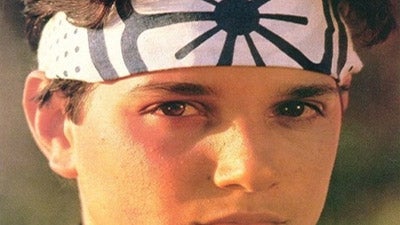
When was the last time that you made a decision based purely on logic and reason?
If you had a hard time thinking of an example, you’re not alone! Most of us use both logic and emotions to make decisions. And yet, so much of the sales and marketing material that we see every day is emotionally cold.
Which is a shame because, when it comes to handing over their money, how your prospects feel about you is much more important than what they think.
This is especially true in competitive market environments. When it’s difficult to differentiate one service offering from another, your prospects rely on their guts to make the right decision.
So, if you want to stand out from the crowd, you’re going to have to move away from the head and engage the heart.
That means putting the features of your products and services to one side and focusing instead on stuff that creates the feel good factor.
Good stories are packed full of emotion. They make us laugh. They make us cry. They fill us with fear and—most importantly—they give us hope.
In business, hope is important. When things are tough and we can’t see a solution, it’s hope that keeps us going.
Hope is also the reason your customers seek you out. They hope that you are the answer to their prayers.
Your goal is to provide that hope by offering irrefutable proof that you are the right person for the job. And there’s nothing that combines storytelling and an endorsement of your ability more persuasively than business case studies.
The Karate Kid and Compelling Case Studies
I’m a child of the 80’s,which mean’s I’m a fan of soft rock, arcade games and cheesy action movies. And there’s none cheesier than The Karate Kid.
For the uninitiated, The Karate Kid is the story of Daniel LaRusso, a young lad who is taken away from everything he knows and loves when his mum gets a job in another state.
His new life gets off to a wobbly start when he falls foul of some bullies from the local karate school.
Enter Mr. Miyagi, a mild mannered janitor and, as luck would have it, karate genius who agrees to train him. This kickstarts Daniel’s transformation from punching bag to martial arts wunderkind.
Now imagine for a moment that, instead of a classic teen action flick, The Karate Kid was in fact a video case study for Mr. Miyagi’s school of karate.
As a piece of marketing material it would be damn persuasive. After watching it, it would be almost impossible to say no to being trained by the great Kasuke Miyagi.
What’s especially interesting is that, while the movie showcases Mr. Miyagi’s talents, The Karate Kid is not Mr. Miyagi’s story.
It’s Daniel’s.
This is an important distinction.
Many people think that their case studies should be about them.
They shouldn’t.
Compelling Case Studies Are Not About You
What makes The Karate Kid so compelling is not the quality of Mr. Miyagi’s teaching, but Daniel’s journey from lonely new boy to All Valley’s karate champion.
His story is the one that we relate to. He is our hero because in many ways, he is just like us.
Therefore, to ensure that your business case studies exert an irresistible attraction on your prospects, you’ve got to make your clients the star. Like Daniel, the clients in your case studies are the people that your prospects will relate to the most.
4 Steps to Creating Compelling Business Case Studies
Now that we’ve established how important it is to make your clients the star of your case studies, let’s dive into the four elements that will go into your compelling client stories.
Part 1: Introduce Your Client
Scriptwriters know that in order to get an audience emotionally invested in their film, the viewer must identify with the hero.
That’s why the first part of The Karate Kid introduces us to Daniel. A few minutes into the movie, we already have a good idea of who he is and what his life is like. We understand his hopes, his fears and his dreams.
The introduction of your case study should strive to do the same. You want to include all the information your reader needs to identify with the protagonist. At a minimum, this includes:
- Their role
- The industry sector or market their business operates in
- The size of their business
- The goal they wanted your help to achieve
This information will let the reader know they’re in the right place. They’ll understand that you help people like them, because they will see themselves in your protagonist.
When your protagonist’s goals mirror your prospective clients’ own desires, they will become invested in the outcome.
Part 2: Describe Your Client’s Problems
In his book Story: Style, Structure, Substance and the principles of Screenwriting, award winning author Robert McKee explains that the one essential ingredient in all great stories is conflict.
Without it, stories would be as dull as dishwater.
Let’s face it—if Daniel’s new life in Reseda was plain sailing, it wouldn’t make a very interesting film.
Daniel’s story enthralls us because it’s about a guy who has pretty much lost everything: his home, his friends, his dad. He yearns for the familiar but is forced to become a stranger in a strange place.
Even if we can’t identify with everything he’s going through, we can certainly relate to some of it—the feeling of being alone, the challenge of making new friends, the loss of loved ones and the pain of being bullied. We can’t help but be drawn into his struggle and root for a happy outcome. In a way, we are rooting for ourselves.
This is why the second part of your case study should outline the challenges that your client was struggling with when they first came to you.
The more your prospective clients can relate to your past client’s problems, the more they will connect to the story. They’ll also start to suspect that, because you’ve dealt with this problem in the past, you might just have the solution to their problem, as well.
Part 3: Outline Your Solution
Becoming a karate master doesn’t happen overnight. It takes years of dedication. And while the journey is important, showing it all would make for a very long and very boring film.
The Karate Kid’s scriptwriters knew they couldn’t subject us to too much of Daniel’s training, or we’d walk out. So they concentrated on key phases and used a montage to provided an overview of the rest.
Montages work because they tell a story in a stream of powerful images. Your solution section should do the same.
Don’t bore your prospective client with every tiny detail of how you do what you do.
It will be tempting. After all, this is your time to shine. But you’ve got to remember your audience. They’re not into your thing as much as you are.
A well-designed solution section outlines the steps that you took to help your client overcome the specific problems you outlined in the last section.
And, like a good montage, it gives a high velocity impression of what your past client gained at each step along the way.
Part 4: Identify Tangible Results
The climax of a movie is critical.
Having followed Daniel through his trials and tribulations, the karate contest is the payoff for both his character and for us.
That final kick in the championship match is far more than the knockout blow, and goes much deeper than simply winning the championship. It marks Daniel’s triumph over adversity and the achievement of his most important goals:
- Filling the hole left by his dad
- Acceptance from the local community
- Overcoming the bullies
- Getting the girl
We come away from the film thinking that anything is possible, especially if we have Mr. Miyagi in our corner.
Getting your result section right is just as important.
The result of your case study should go much deeper than the outcomes of your service. For example, I run a PR company. My case study won’t be very effective if I simply talk about the media coverage that was generated for a past client.
What’s important is the impact of that coverage on my client’s business.
One of my clients recently told me our work together had helped to attract £100,000s worth of new business opportunities.
Not only that, but our journey has also given him greater confidence in new business and networking situations. Most importantly, he no longer feels that his business is vulnerable. His business is becoming the business he always dreamed it would be.
Now that is a happy ending.
Ready to Hit the Pavement?
Compelling and effective business case studies are a great way to engage the hearts—as well as the minds—of your prospective client. Realistically speaking, the best way to get the get the information you need to make your case studies zing is to speak to your past clients.
Just as The Karate Kid is Daniel’s story, not Mr. Miyagi’s, your case studies are your clients’ story, not yours. So get out there and start inviting them to tell their story!
This article was originally published by Firepole Marketing
Author: Alex Moscow is the owner of 9mm PR, a content marketing agency that helps business to business owners build presence, pipeline and profits. He’s just published a short guide that will help you transform your case studies into head turning, prospect pulling, business winning mean machines. You can follow him on LinkedIn and Google+.
Published: June 6, 2014
2661 Views
2661 Views












